 Previous Page Next Page
Previous Page Next Page
Using parameter control to specify a parameter to a report
Using parameter form control to run reports
Using filter control to filter report data
Using navigation control to undo/redo value selection in filter controls
Web controls are report components designed to be similar to the kinds of controls found on web pages. In Page Report Studio, these four types of web controls can be applied: parameter control, parameter form control, filter control, and navigation control. However for page report created in JReport Designer, you can add web controls to them only when the corresponding catalog contains business views.
A JReport Live license for JReport Server is required in order to use this feature. If you do not have the license, contact your Jinfonet Software account manager to obtain it.
A parameter control is a web control that is bound with a parameter used by the current report. By specifying values to the parameter in a parameter control, you can pass the parameter values to JReport and run the report with the specified values.
Cascading parameters cannot be used in parameter controls. If you want to do this, use parameter form controls instead.
To insert a parameter control and use it to specify a parameter to a report:
The Insert Parameter Control dialog appears.
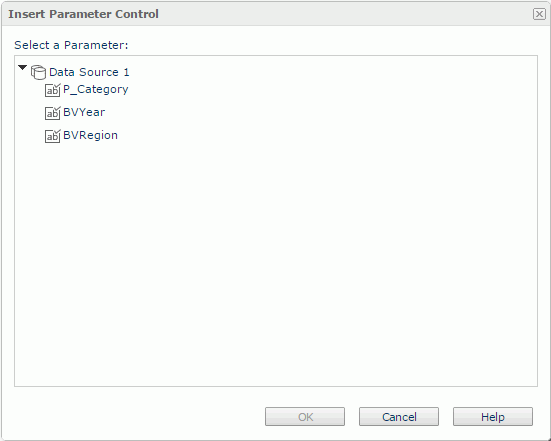
Note: If the specified parameter is no longer used in the report, the parameter control will become invalid.
A parameter form control is a web control that is bound with the parameters used by the current report or other reports. By specifying values to the parameters in a parameter form control, you can make the reports run with the specified parameter values.
To insert a parameter form control and use it to run report:
The Insert Parameter Form Control dialog appears.
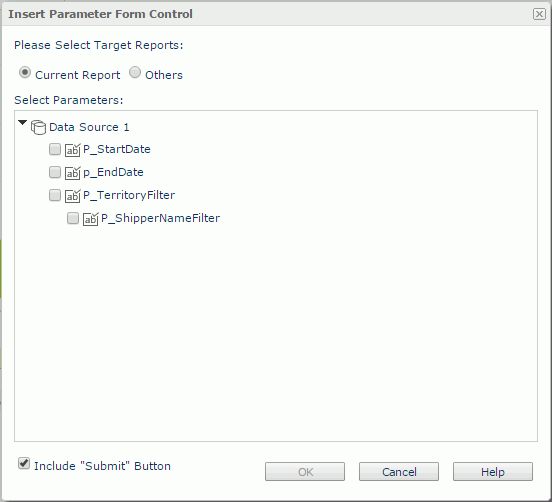
The parameter form control is now inserted in the report. It lists the selected parameters for the current report or lists all parameters used by the specified reports.
Note: If you save or publish a report containing a parameter form control to another directory, the reports that you bind the parameter form control with will not be saved or published along with the report.
A filter control is used to filter one or more data components in a report, which refer to tables, banded objects, charts, and crosstabs. For how a filter control works, see Filtering Scenarios.
The filters created via filter controls are also referred to as on-screen filters.
To insert a filter control and use it to filter report data:
The Insert Filter Control dialog appears.
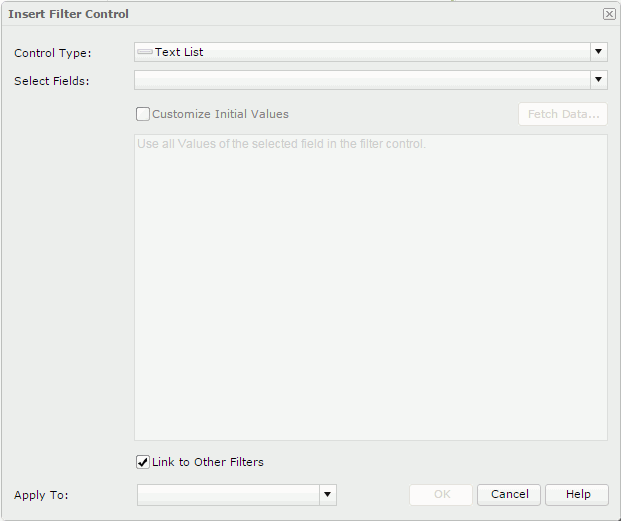
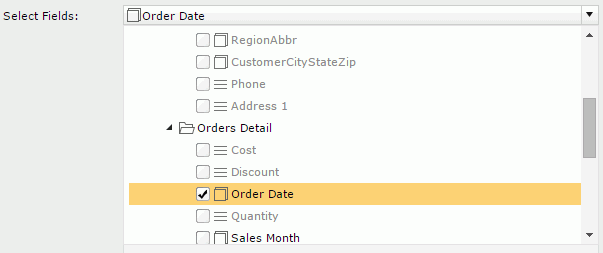
To enter a value, input it in one row, and then press the Enter key to start a new row. General text editing operations including copy, paste, cut, backspace, delete and so on are supported. You need to make sure of the accuracy of the formats and values.

By default, JReport applies the filter to all the data components created using the business views in which the selected objects are obtained. If you uncheck the data components which are based on the same business view as any selected objects, these objects will not be used in the filter and thus their values will not be listed in the filter control.
You can make use of the Ctrl or Shift key to select multiple values. If the values themselves have inter-relationship, after you make the selection, JReport will deal with the rest values to put the related ones on the top and gray the ones that have no relationship with the selected values. The grayed values are still selectable.
After inserting filter controls in the report, you can also insert a navigation control for undoing/redoing the value selection in the filter controls.
When you right-click on the title bar of a filter control, these options are available for managing the filter control.
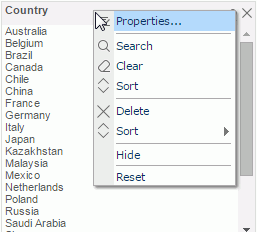
 beside the Filter On text box. Then in the Edit Filter Control dialog, change the settings of the filter control.
beside the Filter On text box. Then in the Edit Filter Control dialog, change the settings of the filter control.  on the title bar of the filter control to launch the quick search toolbar.
on the title bar of the filter control to launch the quick search toolbar.
The following are details about the usage of the quick search toolbar:



 on the title bar to cancel the selection. This operation can be undone/redone.
on the title bar to cancel the selection. This operation can be undone/redone.When the Use Default On-screen Filter Values feature is enabled for page reports, each end user can save the values specified to the filter controls in a page report as the default values for the report and for him. Next time when the user runs the report, the saved values will be applied to the filter controls by default. The default values in filter controls work on a user-report basis.
By default, all the filter controls applied to the same data components in a report are interlinked. The link relationship is reflected on the filter values dynamically: selecting a value in one on-screen filter will result in that values which do not belong to the selected value, contain the selected value or relate to the selected value are grayed in all the other linked filter controls for distinguishing. For example, there is a filter control based on the field Country and another on City and they both are applied to the same table. When you select USA in the Country filter control, the values in the City filter control will change as follows if the control has scrollbar: the cities belong to USA are displayed in the upper area of the filter control, and the other cities are put in the lower area and grayed out. If the City filter control has no scrollbar, all the values remain their positions and the values not belonging to USA are grayed out. In both cases all the values are still selectable.
When using a filter control, you can determine whether or not to make the filter control apply the link relationship via the Link to Other Filters option.
Below is an example showing the logic of other linked filters:
When
Filter1 is applied to DC1, DC2, and DC3.
Filter2 is applied to DC1.
Filter3 is applied To DC2.
Filter4 is applied to DC2 and DC3.
The result:
For Filter1, other linked filters are Filter2, Filter3, and Filter4.
For Filter2, other linked filter is Filter1.
For Filter3, other linked filters are Filter1 and Filter4.
For Filter4, other linked filters are Filter1 and Filter3
A navigation control can be considered as an accessorial control for filter controls and is used to deal with the value selection operations in all the filter controls in the same report.
To insert a navigation control into a report, do either of the following:
A navigation control is a combination of three buttons: